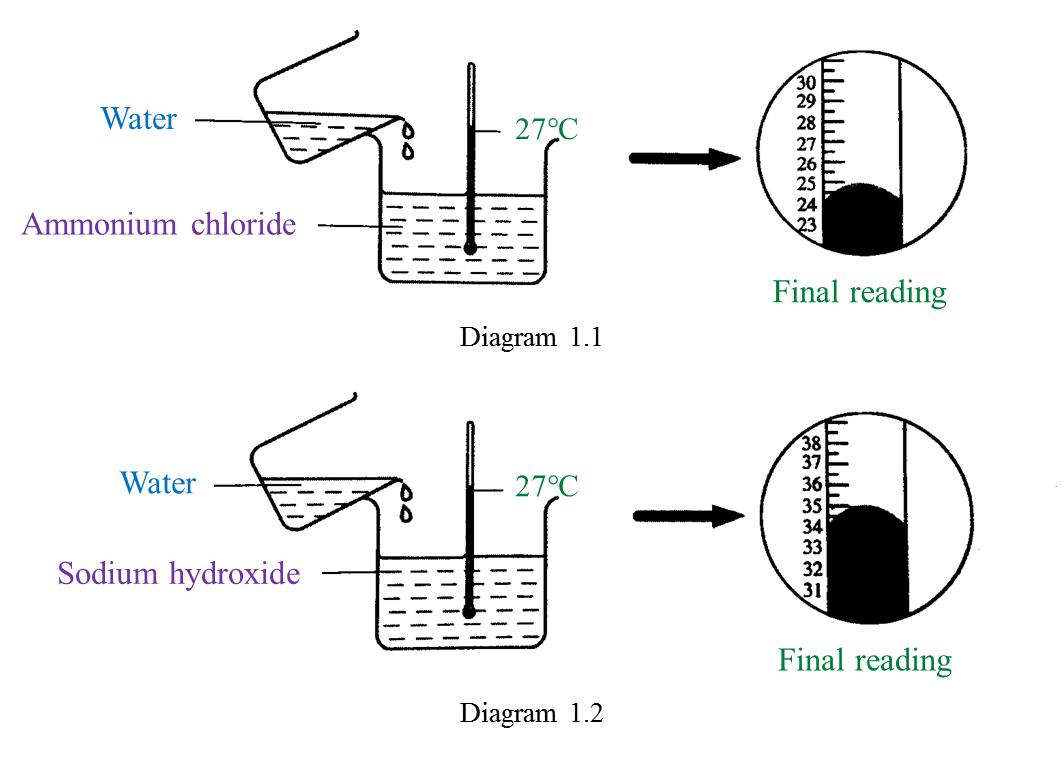Question 1:
Diagram 1.1 and Diagram 1.2 show an experiment to study the heat change in chemical reactions at room temperature.

(a) Based on Diagram 1.1, what is your observation about the change in temperature?
Mark (\/) for your answer in Table below. [1 mark]

(b) What is the final reading for the thermometer in Diagram 1.2? [1 mark]
(c) State the variables in this experiment.
(i) Constant variable [1 mark]
(ii) Responding variable [1 mark]
(d) State one hypothesis for this experiment. [1 mark]
Answer:
(a)

(b) 35 oC
(c)(i) The amount of water or initial temperature
(c)(ii) The final temperature
(d) In a chemical reaction, heat is given out causing a rise in temperature or is absorbed causing a drop in temperature.
Diagram 1.1 and Diagram 1.2 show an experiment to study the heat change in chemical reactions at room temperature.

(a) Based on Diagram 1.1, what is your observation about the change in temperature?
Mark (\/) for your answer in Table below. [1 mark]

(b) What is the final reading for the thermometer in Diagram 1.2? [1 mark]
(c) State the variables in this experiment.
(i) Constant variable [1 mark]
(ii) Responding variable [1 mark]
(d) State one hypothesis for this experiment. [1 mark]
Answer:
(a)

(b) 35 oC
(c)(i) The amount of water or initial temperature
(c)(ii) The final temperature
(d) In a chemical reaction, heat is given out causing a rise in temperature or is absorbed causing a drop in temperature.